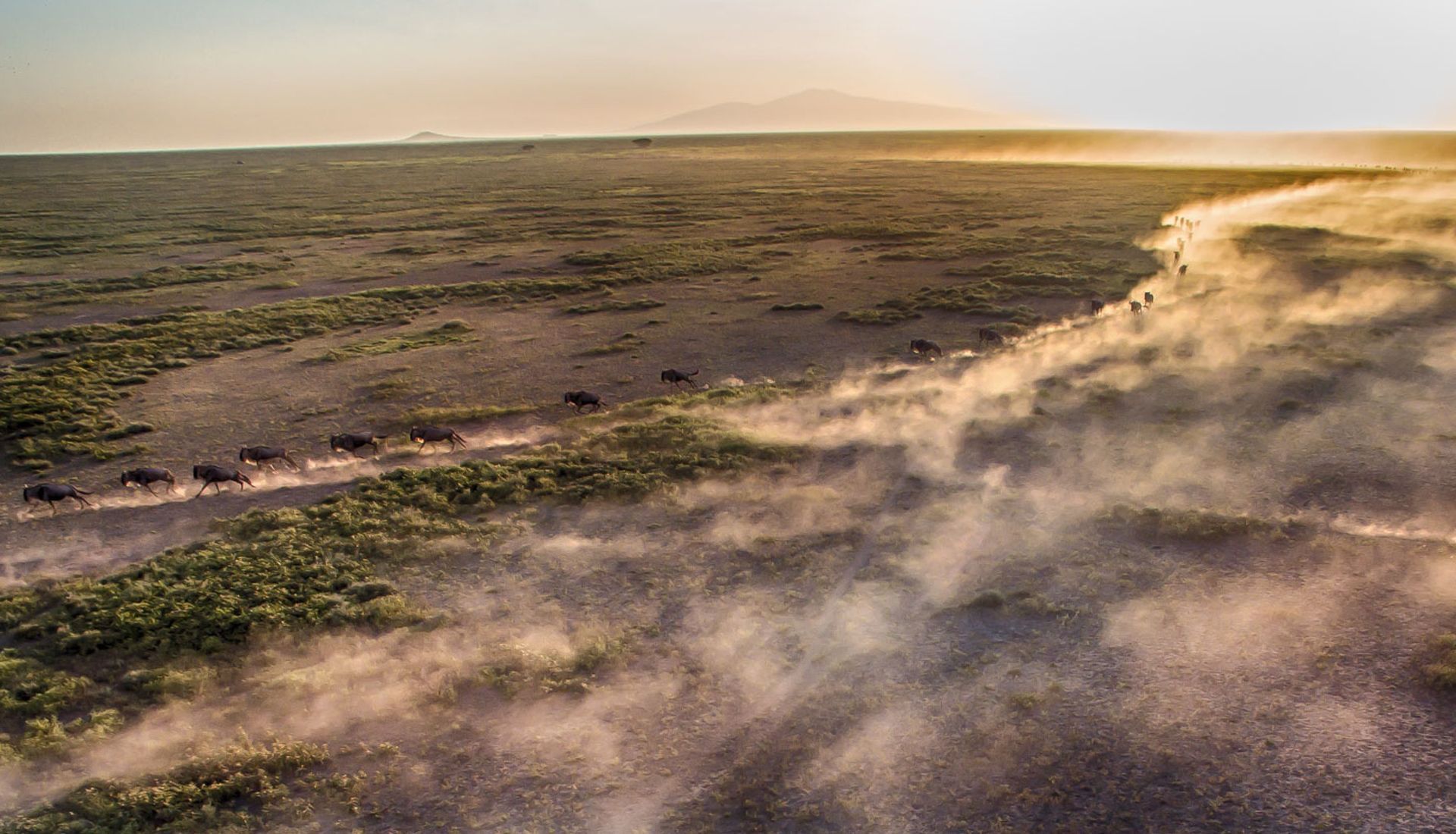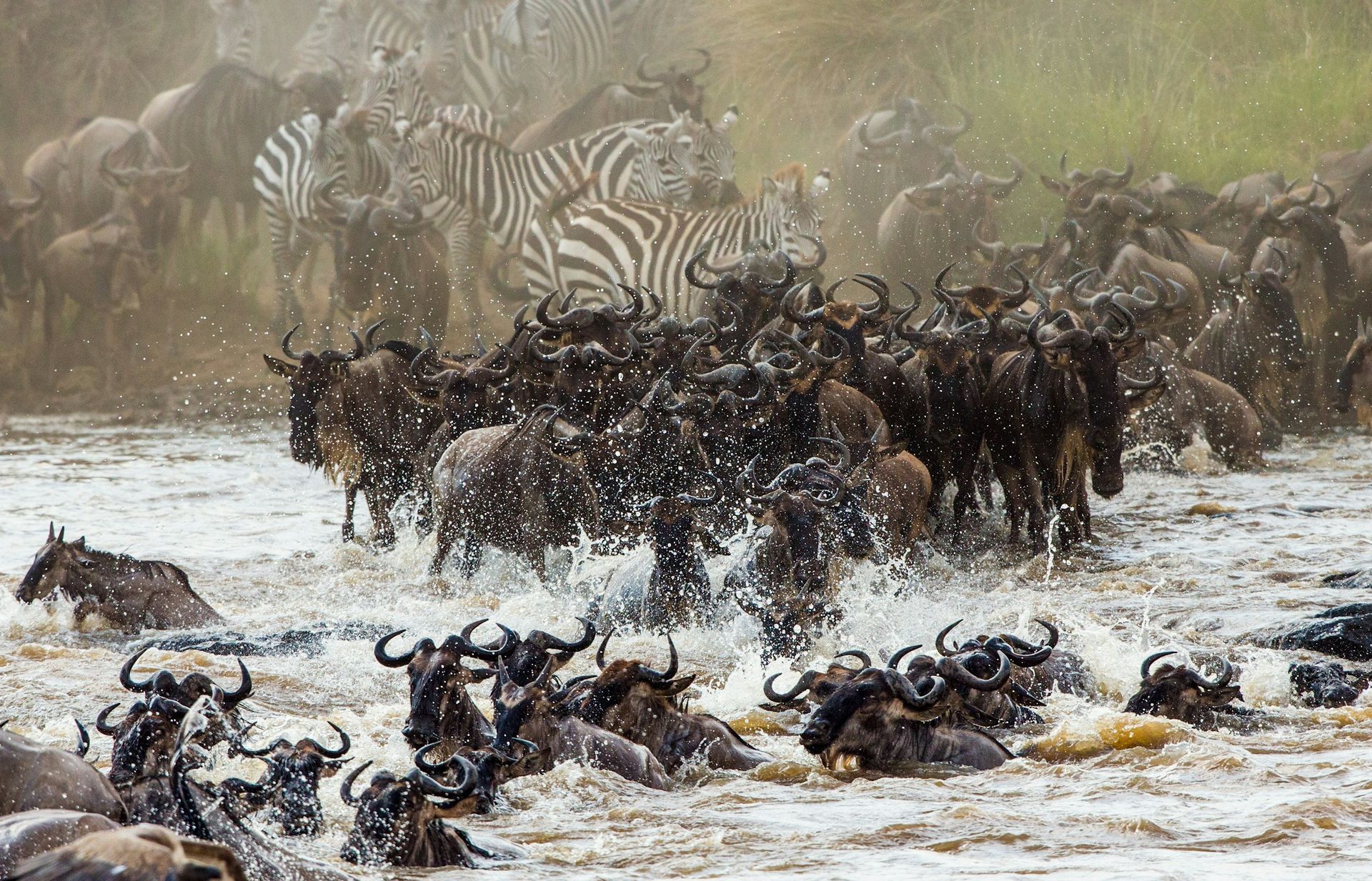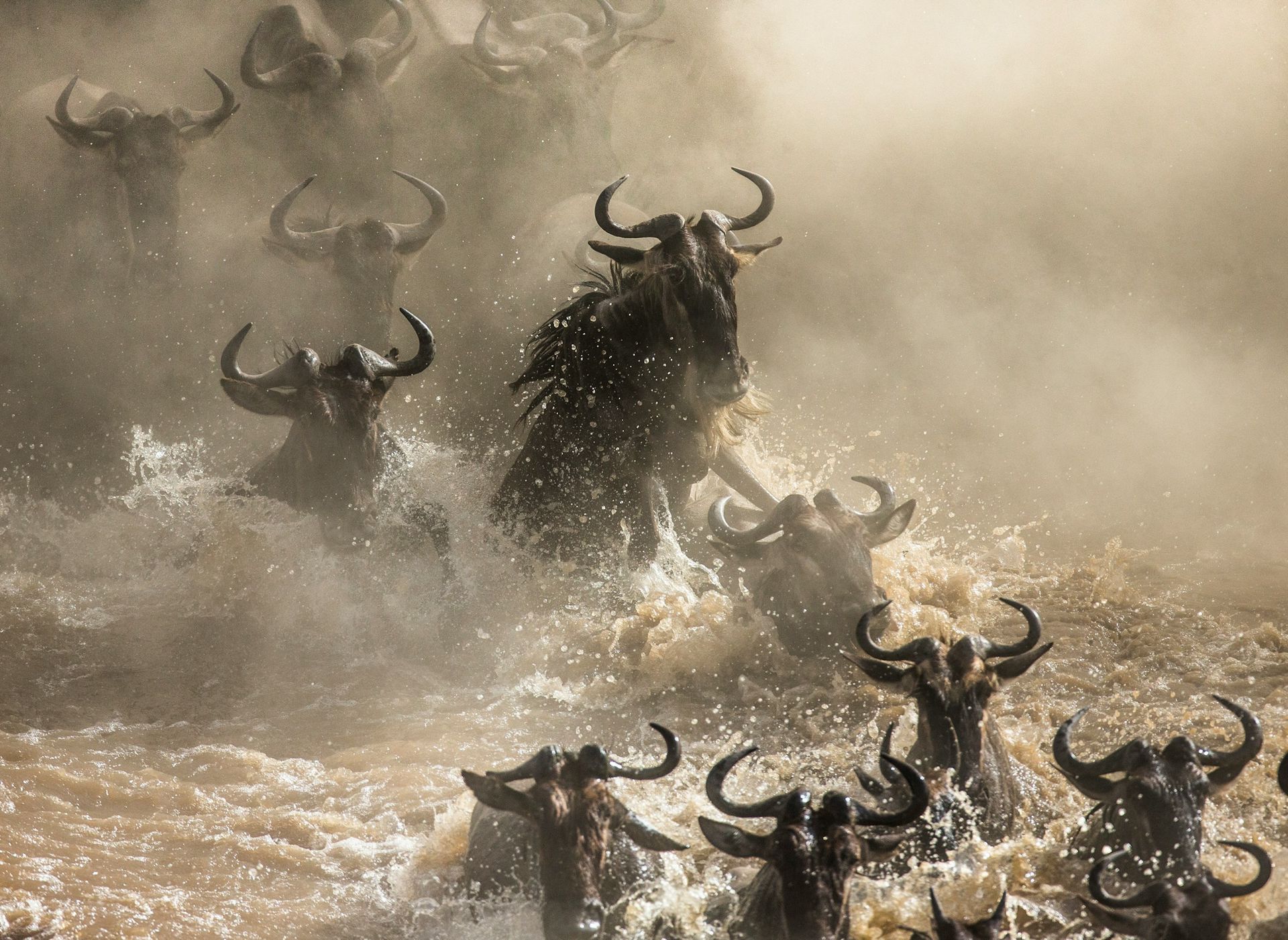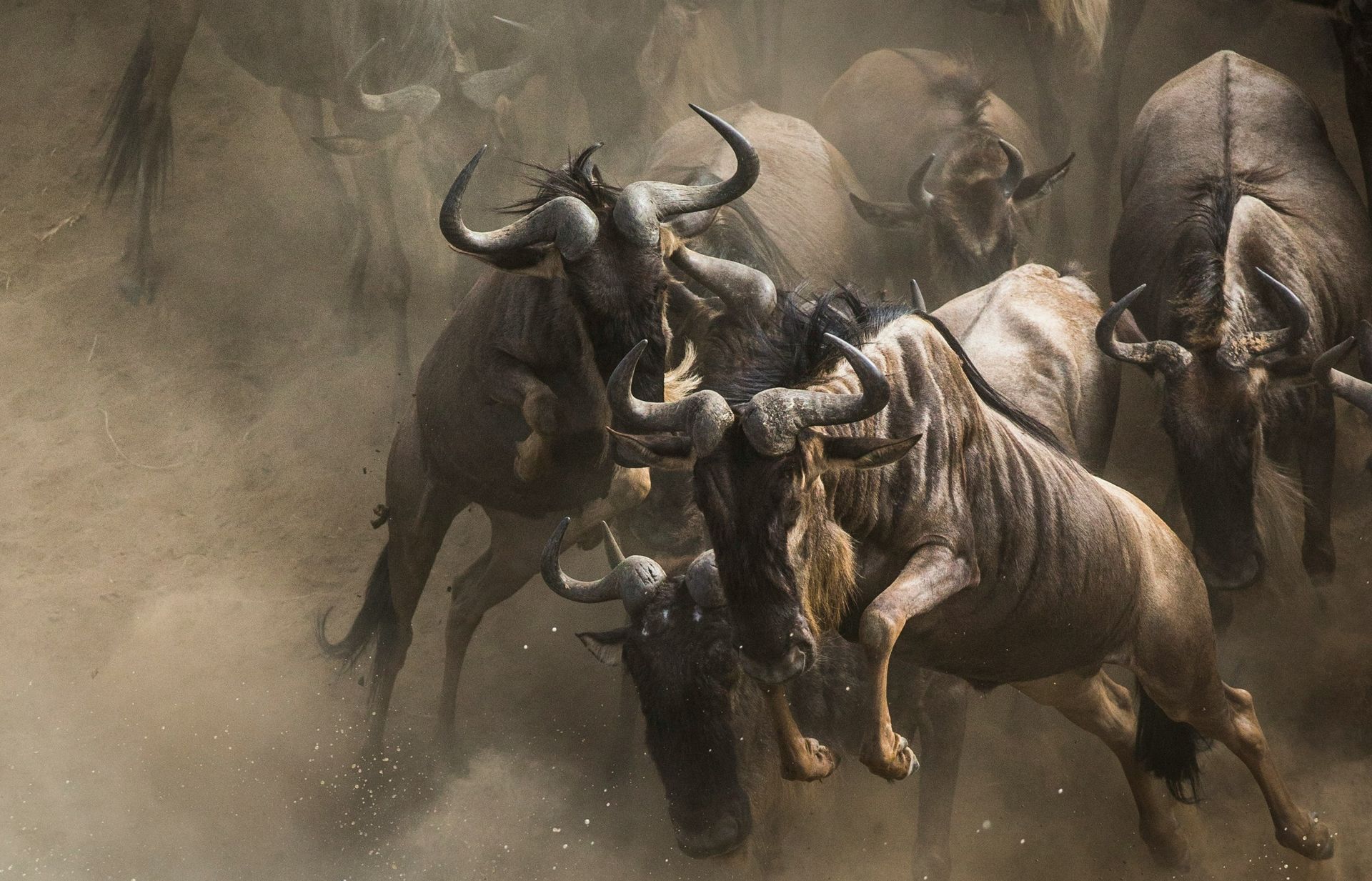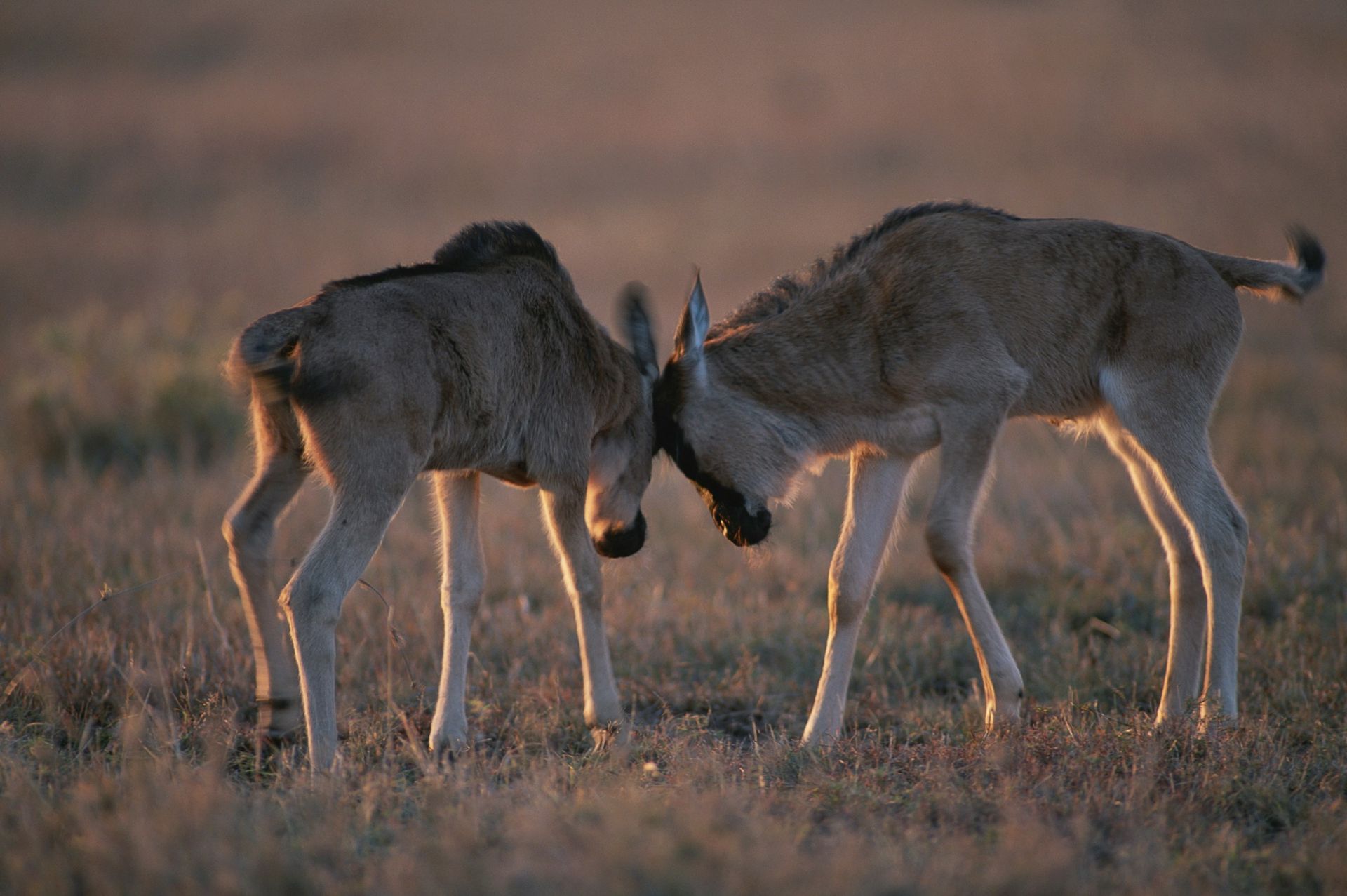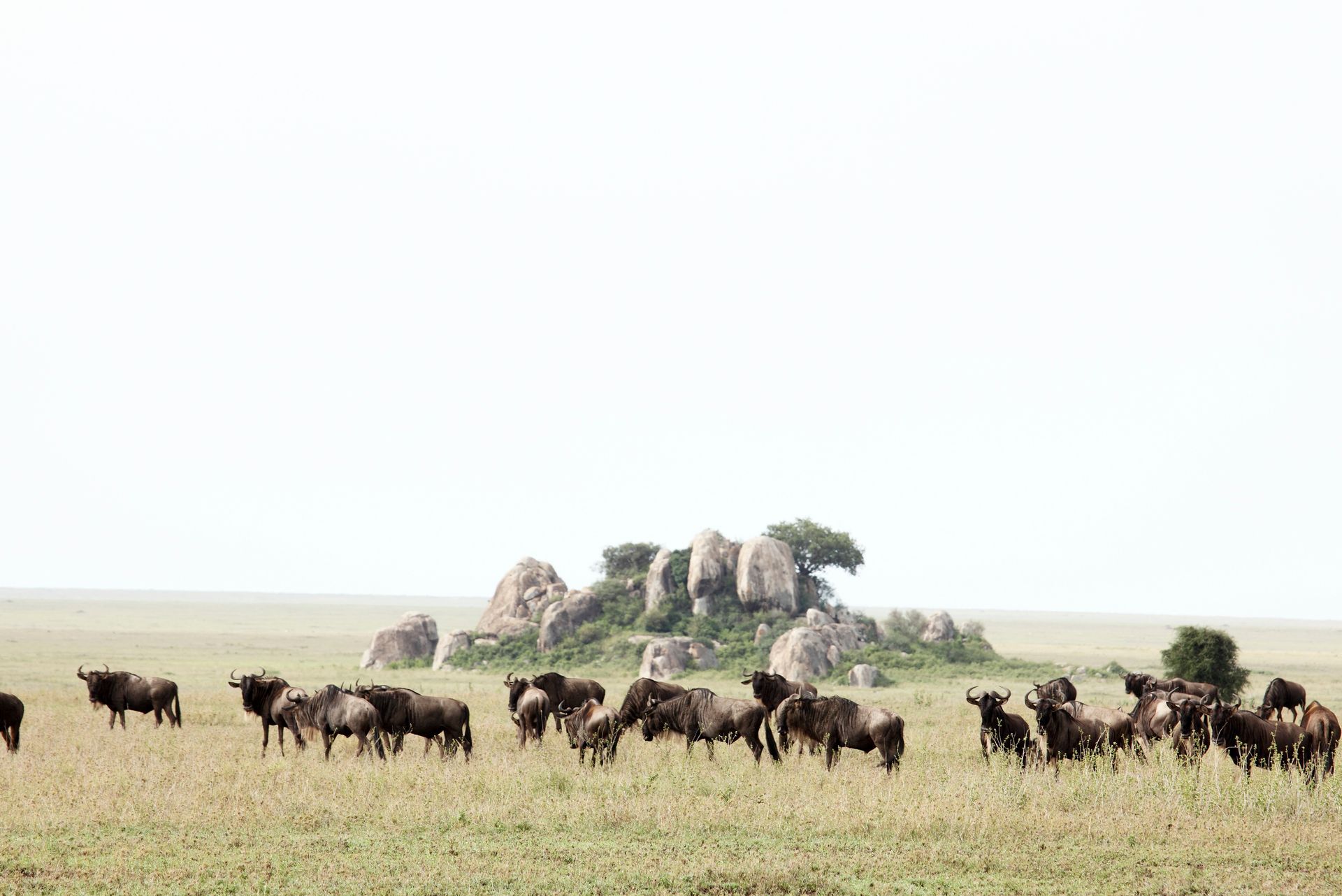AN INSIDER'S GUIDE TO THE GREAT WILDEBEEST MIGRATION
Witness this incredible natural phenomenon with Leadwood Holidays
There are few wildlife events on Earth that ignite the imagination quite like the Great Wildebeest Migration. It’s the kind of spectacle that draws travellers, photographers, naturalists and dreamers to East Africa time and time again — not just to see, but to feel something timeless. Stretching across the boundless plains of northern Tanzania and southwestern Kenya, this annual journey of more than a million wildebeest, accompanied by zebra, gazelle and eland, is one of nature’s greatest dramas. It's primal and poetic. And a thundering testament to instinct and endurance, unfolding across a landscape that has remained remarkably unchanged since the dawn of humankind.
At its heart, the migration is a story of movement — driven not by maps or borders, but by the promise of rain and the lure of fresh grazing. The journey begins in the southern Serengeti, where the herds gather in vast numbers to calve between January and March. This is a time of renewal and vulnerability. Every day in the Ndutu region, thousands of wildebeest calves take their first unsteady steps into a world brimming with life and danger. The surrounding predators — lion, leopard, hyena, cheetah — know this too. And the drama of survival begins in earnest.
As the rains recede and the grasses wither, the herds begin to move northwest, drawn to the Grumeti River and the promise of water. By June and July, the landscape shifts again, becoming drier, dustier — and more perilous. It’s here that the first major river crossings take place. The Grumeti River, swollen with crocodiles, tests the herds’ nerve and resilience. But this is only a prelude to what lies ahead.
Come late July and August, the herds surge towards the Mara River — a name that has become synonymous with drama and danger. For many, this is the migration’s headline act. Wildebeest gather in their thousands at the riverbanks in the northern Serengeti and Masai Mara in neighbouring Kenya, hesitating, jostling, building in nervous energy before one brave soul takes the leap.
What follows is chaos — hooves kicking up spray, bodies plunging into fast-moving water, predators lying in wait. It is breathless, brutal, and unforgettable. Not all will make it to the other side, but those who do are rewarded with the rich grazing lands of the Masai Mara.
By October, the circle begins to close. As rains fall in the south once more, the herds begin their long return to the Serengeti. This continuous movement, year in and year out, is not only the rhythm of the migration — it is the heartbeat of the Serengeti-Mara ecosystem itself. Every predator, every scavenger, every patch of grass plays a role in this immense web of life.
And while the migration is undeniably a spectacle, it is also a profoundly grounding experience. To witness it with Leadwood Holidays is to move with the land — to be present in a landscape where time is measured not in hours, but in hoofbeats and dust clouds. Our guides and local experts don’t just track the herds; they read the terrain, anticipate movement, and tailor each journey to give guests the most immersive and rewarding experience possible. Whether you prefer the quieter intimacy of the calving season, the raw drama of a river crossing, or the sweeping vistas of the open plains, we ensure you experience the migration as it truly is — not staged or packaged, but wild and real.
What makes this event so remarkable is its consistency and unpredictability all at once. It happens every year, and yet no two years are ever quite the same. Rainfall patterns shift. Crossing points vary. Lions move territories. This unpredictability is what keeps the Great Migration alive — not just in the savannah, but in the hearts of all who witness it.
Ready to follow the rhythm of the wild?
Check out our itineraries!

